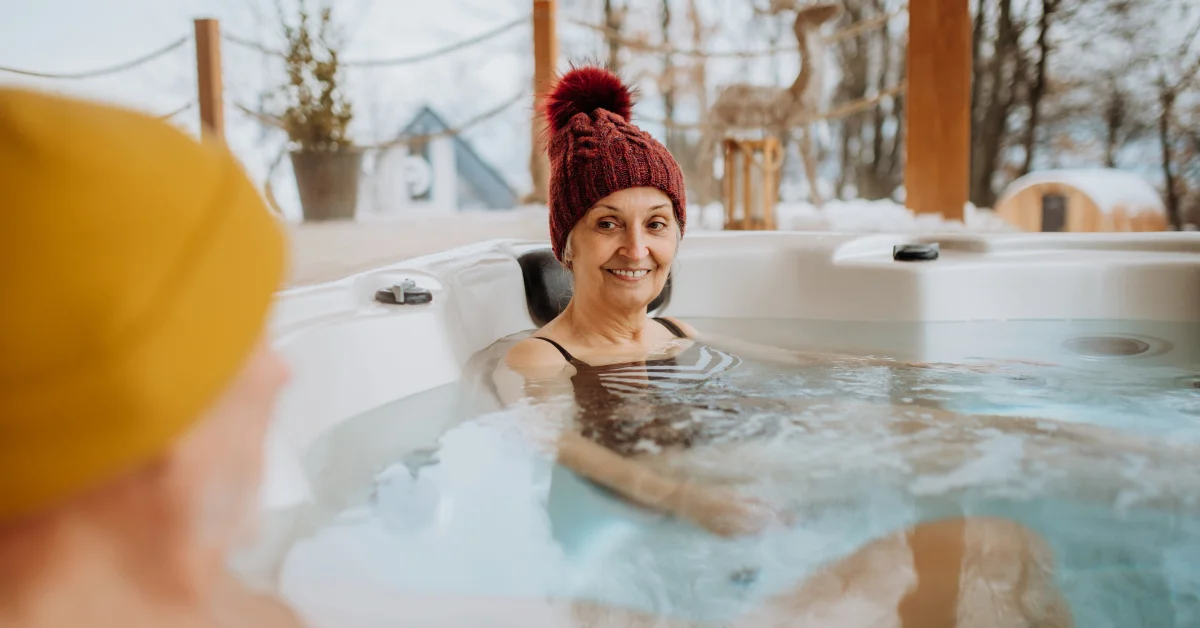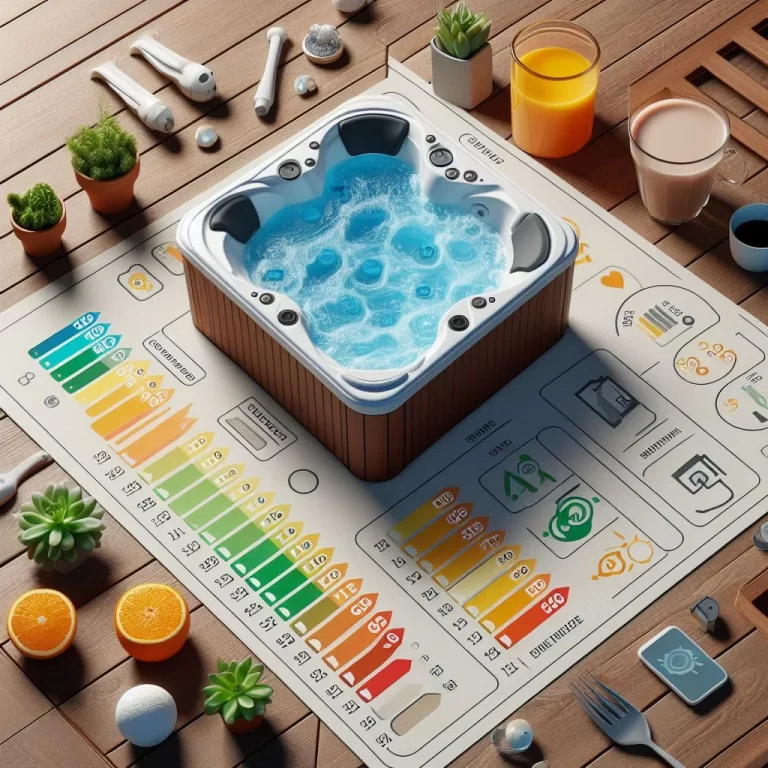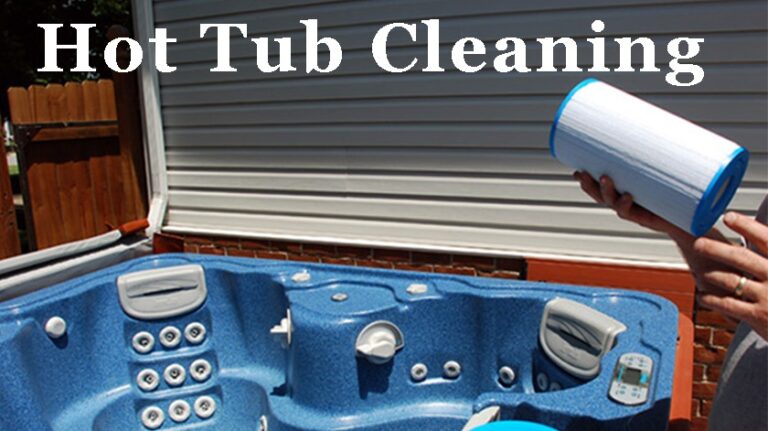Hot Tub Temperature and Pacemakers – Safety, Guidelines, and Precautions
Learn about the safety of using hot tubs if you have a pacemaker. This guide covers recommended temperatures, medical advice, personal stories, and necessary precautions to keep you safe and comfortable while enjoying a hot tub.
When you have a pacemaker, you may question what activities are safe. One common question is whether it is safe to use a hot tub. The warm, relaxing water can be tempting, but knowing if it might pose any risks to your health is essential.
This blog post aims to provide clear, straightforward information on the safety of hot tubs for pacemaker users. I will explore medical advice, recommended temperature guidelines, and real-life experiences to help you make an informed decision.
Whether you are new to using a pacemaker or have had one for years, understanding how to enjoy a hot tub safely can enhance your relaxation time without compromising your health.
Understanding Pacemakers and Hot Tub Safety
A pacemaker is a small device implanted in the chest to help control abnormal heart rhythms. It usually uses electrical pulses to prompt the heart to beat. A pacemaker is essential for many people with heart conditions to maintain a healthy and active lifestyle.
However, having a pacemaker means being cautious about specific activities, including using a hot tub. The primary concern is the effect of the hot tub’s temperature on your cardiovascular system. Hot water causes your blood vessels to dilate, leading to changes in heart rate and blood pressure. For someone with a pacemaker, these changes can potentially interfere with the device’s ability to regulate the heart’s rhythm effectively.
Additionally, the temperature of the hot tub is a crucial factor. High temperatures can increase your heart rate and strain your heart. This can be particularly concerning for those with heart conditions or those who rely on a pacemaker to manage their heart rhythms.
To ensure safety, it is essential to understand the specific risks associated with hot tub use and follow guidelines to help mitigate them. This includes keeping the hot tub at a safe temperature, monitoring your body’s response to the heat, and consulting with your healthcare provider for personalized advice.
Can People with Pacemakers Use Hot Tubs?
A common concern is whether people with pacemakers can safely use hot tubs. The good news is that, in many cases, it is possible to enjoy hot tubs with a pacemaker, but it requires some precautions and an understanding of potential risks.
Medical Opinions and Research Findings
Many cardiologists agree that people with pacemakers can safely use hot tubs if specific guidelines are followed. Research indicates that the primary concern is the effect of heat on cardiovascular function. Hot water can cause your blood vessels to expand, potentially leading to increased heart rate and changes in blood pressure. For pacemaker users, avoiding situations where these changes could disrupt the device’s functioning is essential.
Common Misconceptions and Myths
There are several myths surrounding pacemakers and hot tub use. One common misconception is that hot tub motors’ electromagnetic fields (EMFs) can interfere with pacemaker operation. Modern pacemakers are designed to withstand everyday EMFs, and the risk of interference from a hot tub motor is minimal. However, if you have an older pacemaker model, it is always wise to check with your healthcare provider.
Another myth is that hot tubs are entirely off-limits for anyone with a heart condition. While caution is necessary, many people with pacemakers enjoy hot tubs by adhering to recommended safety measures.
Guidelines for Safe Use
- Consult Your Doctor: Discuss it with your cardiologist before using a hot tub. They can provide personalized advice based on your specific condition and pacemaker model.
- Monitor Temperature: Keep the hot tub temperature at or below 100°F (38°C). Higher temperatures can strain your heart and affect pacemaker function.
- Limit Time: Limit your time in the hot tub to 15-20 minutes. Prolonged exposure to heat can lead to dehydration and increased cardiovascular strain.
- Stay Hydrated: Drink plenty of water before and after using the hot tub to prevent dehydration.
- Listen to Your Body: Pay attention to how you feel. If you experience dizziness, shortness of breath, or unusual symptoms, exit the hot tub immediately and seek medical advice.
Check out Can you go in a hot tub with a pacemaker: A Comprehensive Guide.

Safe Hot Tub Temperature for Pacemaker Users
Temperature is a crucial factor in safely using a hot tub with a pacemaker. The right temperature can help you enjoy the benefits of a hot tub without putting undue stress on your heart.
Recommended Temperature Limits
For pacemaker users, the general recommendation is to keep the hot tub temperature at or below 100°F (38°C). Higher temperatures can increase your heart rate and dilate your blood vessels, placing additional stress on your cardiovascular system. This can interfere with the pacemaker’s ability to regulate your heart rhythm effectively.
Optimal Temperature Range for Safe Use
Staying within the 96°F to 100°F (35.5°C to 38°C) range is considered safe for most pacemaker users. This range allows you to enjoy the warmth and relaxation of the hot tub without the risks associated with higher temperatures. It’s essential to have a reliable thermometer to monitor the water temperature accurately.
Potential Risks of Exceeding Safe Temperature Limits
Exceeding the recommended temperature limits can lead to several risks, including:
- Increased Heart Rate: Higher temperatures can cause your heart to work harder, which may be dangerous if you have a pacemaker.
- Dehydration: Hot water can lead to increased sweating and dehydration, which can affect your overall health and the function of your pacemaker.
- Blood Pressure Changes: Extreme heat can cause significant changes in blood pressure, potentially leading to dizziness or fainting.
- Overheating: Spending too much time in hot water can lead to overheating, which can be particularly risky for individuals with heart conditions.
Tips for Monitoring Temperature
- Use a Hot Tub Thermometer: Always use a thermometer to check the water temperature before entering.
- Check Regularly: If you spend an extended period in the hot tub, check the temperature periodically to ensure it remains within the safe range.
- Adjust as Needed: Be prepared to adjust the hot tub settings if the water gets too hot. It’s better to err on the side of caution.
Medical Advice and Guidelines
Consulting with healthcare professionals is crucial for pacemaker users who wish to use a hot tub safely. Medical advice tailored to your specific condition and device can help mitigate potential risks.
Recommendations from Cardiologists and Healthcare Providers
Cardiologists generally advise that pacemaker users can use hot tubs if they adhere to certain safety precautions. Key recommendations include:
- Regular Check-Ups: Ensure your pacemaker functions correctly through regular check-ups with your cardiologist.
- Personalized Advice: Seek personalized advice from your healthcare provider. They can give you specific guidelines based on your health condition and pacemaker model.
- Temperature Control: Emphasize the importance of maintaining the hot tub temperature within safe limits (below 100°F or 38°C).
Pacemaker Manufacturer’s Guidelines on Hot Tub Use
Manufacturers of pacemakers often provide guidelines regarding the use of electronic devices and activities that could impact the pacemaker’s performance. While modern pacemakers are designed to withstand typical electromagnetic interference, it’s always wise to:
- Review Manufacturer’s Instructions: Check the user manual or contact the manufacturer for any specific warnings or advice related to hot tubs.
- Follow Manufacturer’s Safety Recommendations: Adhere to all recommended precautions and safety measures outlined by the pacemaker manufacturer.
Check out Hot tubs and pacemakers.
Importance of Consulting with a Healthcare Provider
Each individual’s health condition is unique, and the impact of using a hot tub can vary from person to person. Consulting with your healthcare provider can help you:
- Understand Your Risks: Gain a clear understanding of the potential risks based on your health status.
- Receive Customized Advice: Obtain advice tailored to your specific needs and circumstances.
- Monitor Health Changes: Learn what symptoms or signs to watch for that may indicate complications when using a hot tub.

Personal Experiences and Community Insights
Learning from the experiences of others who have pacemakers and use hot tubs can provide valuable insights and practical tips. Here, we share some personal stories and advice from online communities.
Anecdotal Evidence and Personal Stories
Many pacemaker users report positive experiences with hot tub use when they follow recommended safety guidelines. Here are a few stories:
- John’s Experience: John, a 55-year-old pacemaker user, found that keeping the hot tub temperature at 98°F allowed him to enjoy the hot tub without experiencing any discomfort. He emphasizes staying hydrated and limiting his time in the hot tub to 15 minutes.
- Maria’s Story: Maria, a 60-year-old with a pacemaker, shared that she continuously checks her hot tub’s temperature before getting in and has never had any issues keeping the temperature below 100°F. She also advises fellow pacemaker users to avoid using the hot tub if they feel unwell or tired.
Forums and Online Communities
Online forums and communities are excellent resources for sharing and gathering information. Here are some common insights and tips from these communities:
- Stay Informed: Many users suggest regularly visiting pacemaker support groups and forums to stay updated on the latest advice and shared experiences.
- Ask Questions: Don’t hesitate to ask questions in forums or online communities. Experienced users are often willing to share their knowledge and tips.
- Share Your Experiences: Sharing your experiences can help others in the community. It’s a great way to give back and support others with the same concerns.
Tips and Advice from Experienced Individuals
Experienced pacemaker users often share practical tips that can make hot tub use safer and more enjoyable:
- Timing: Use the hot tub at times when you feel most relaxed and not rushed. This helps in monitoring your body’s response to the heat.
- Hydration: Drink water before and after using the hot tub to stay hydrated.
- Exit Safely: When exiting the hot tub, do so slowly to avoid dizziness or a sudden drop in blood pressure.
Preventive Measures and Safety Tips
Using a hot tub with a pacemaker requires taking specific precautionary measures to ensure your safety. These tips will help you enjoy the benefits of a hot tub while minimizing potential risks.
Steps to Take Before Using a Hot Tub
- Consult Your Doctor: Always speak with your cardiologist or healthcare provider before using a hot tub. They can provide personalized advice based on your health condition and pacemaker type.
- Check Your Pacemaker: Ensure your pacemaker is functioning correctly. Regular check-ups with your healthcare provider are essential.
- Review Manufacturer Guidelines: Refer to the guidelines provided by your pacemaker’s manufacturer to understand any specific precautions you need to take.
Signs and Symptoms to Watch For During Hot Tub Use
- Dizziness or Lightheadedness: If you feel dizzy or lightheaded, exit the hot tub immediately. These symptoms could indicate a sudden drop in blood pressure.
- Shortness of Breath: Difficulty breathing in the hot tub can indicate cardiovascular stress. Leave the hot tub and rest.
- Palpitations or Irregular Heartbeats: If you experience unusual heart rhythms, consult your healthcare provider and stop using the hot tub.
Precautions to Ensure Safe and Enjoyable Hot Tub Experiences
- Limit Time: Keep your sessions short. Aim for 15-20 minutes per session to avoid prolonged exposure to heat.
- Stay Hydrated: Drink plenty of water before and after using the hot tub to prevent dehydration.
- Monitor Temperature: Maintain the hot tub temperature at or below 100°F (38°C). Use a reliable thermometer to ensure accuracy.
- Enter and Exit Slowly: Move slowly when getting in and out of the hot tub to avoid sudden changes in blood pressure.
- Have a Companion: Use the hot tub with someone else nearby if possible. They can assist if you experience any discomfort or symptoms.
- Avoid Alcohol: Refrain from drinking alcohol before or during hot tub use, as it can exacerbate dehydration and affect your cardiovascular system.
FAQs:
Can I use a hot tub if I have a pacemaker?
Yes, you can use a hot tub if you have a pacemaker. Still, safety guidelines must be followed, such as keeping the temperature below 100°F (38°C) and consulting your healthcare provider beforehand.
What temperature should I set my hot tub to?
Set your hot tub temperature at or below 100°F (38°C). This helps prevent excessive strain on your heart and ensures the pacemaker can function correctly.
How long can I stay in a hot tub with a pacemaker?
Limit your time in the hot tub to 15-20 minutes per session. Prolonged exposure to heat can lead to dehydration and increased cardiovascular strain.
What symptoms should I watch for while using a hot tub?
Watch for dizziness, lightheadedness, shortness of breath, and irregular heartbeats. If you experience these symptoms, exit the hot tub immediately and rest.
Is using a hot tub alone safe if I have a pacemaker?
Using a hot tub with someone nearby who can assist you if needed is safer. A companion can provide additional safety in case you experience discomfort or symptoms.
Can electromagnetic fields from the hot tub motor affect my pacemaker?
Modern pacemakers are designed to withstand typical electromagnetic fields. However, it is always wise to check with your healthcare provider and follow specific guidelines from your pacemaker’s manufacturer.
Should I avoid alcohol while using a hot tub?
Yes, it is best to avoid alcohol before and during hot tub use. Alcohol can increase dehydration and affect your cardiovascular system, potentially leading to complications.
What precautions should I take when exiting the hot tub?
Exit the hot tub slowly to avoid sudden changes in blood pressure. Take your time getting out and allow your body to adjust to the cooler air temperature gradually.
Conclusion
Proper precautions and guidance allow you to enjoy a hot tub with a pacemaker. By understanding the potential risks, following recommended temperature guidelines, consulting with your healthcare provider, and learning from the experiences of others, you can safely relax and benefit from the soothing effects of a hot tub.
Always prioritize your health and well-being, and don’t hesitate to contact your doctor for any specific concerns or questions.
Ready to make the most of your hot tub experience with peace of mind? Visit Hot Tub Patio for more tips and top-quality hot tubs designed for your safety and enjoyment.
Do you have any personal experiences or additional tips on using a hot tub with a pacemaker? Share your thoughts in the comments below!












